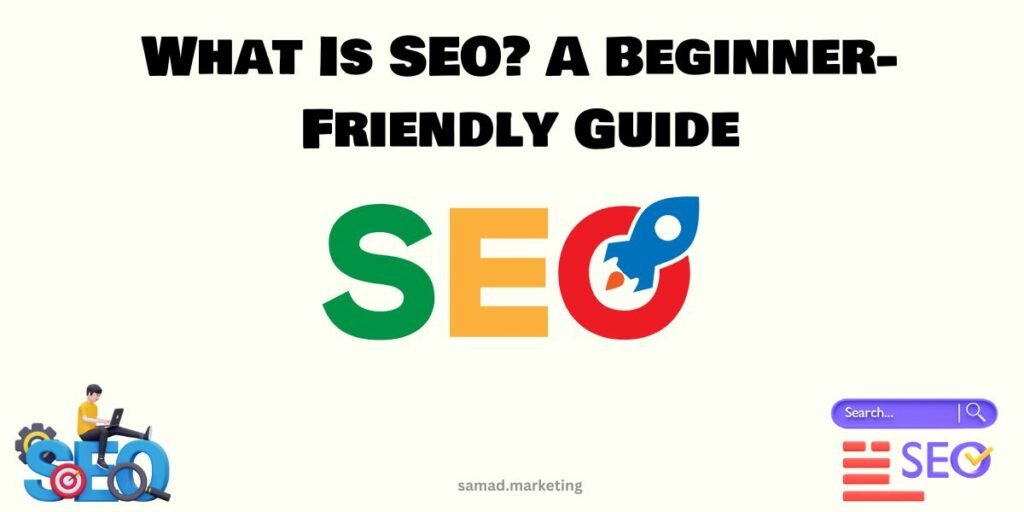If you’ve heard the term “SEO” and wondered what it really means, don’t worry — you’re not alone. Let’s break it down in simple words.
What Is SEO?
SEO stands for Search Engine Optimization. It’s the process of improving your website so that it ranks higher on search engines like Google.
In short, SEO helps people find your website when they search online.
For example, if someone types “best shoes for running” on Google, SEO decides which websites show up first. The better your SEO, the more chances your website has of appearing at the top of the search results.
Why Is SEO Important?
- More visitors: Higher rankings mean more people will click on your site.
- Free traffic: SEO brings organic (unpaid) traffic, unlike paid ads.
- Better user experience: Good SEO also means a faster, more useful website for your visitors.
- Builds trust: Websites that rank higher are seen as more reliable by users.
Types of SEO
There are three main types of SEO, and each one plays an important role:
1. On-Page SEO
This is all about optimizing what’s on your website.
Key elements:
- Content: Write helpful, high-quality content that answers people’s questions.
- Keywords: Use the words people are searching for (e.g., “best laptops for students”).
- Headings: Organize your content with titles and subheadings (H1, H2, etc.).
- Images: Use relevant images with descriptive alt text.
- Internal links: Link to other helpful pages on your site.
✅ Example: If you have a blog about gardening, on-page SEO means writing clear articles like “How to Grow Tomatoes at Home” with the right keywords and images.
2. Off-Page SEO
This focuses on everything outside your website that helps you rank better.
Key elements:
- Backlinks: Other websites linking to your content (this is a major ranking factor).
- Social signals: Shares and mentions of your content on social media.
- Brand mentions: When your brand name is mentioned online, even without a link.
✅ Example: If a popular gardening site links to your tomato-growing blog, that boosts your credibility and SEO power.
3. Technical SEO
This is about improving your website’s technical health so that search engines can find and understand your site easily.
Key elements:
- Site speed: Faster websites rank better.
- Mobile-friendliness: Your site must work well on phones and tablets.
- Secure connection: Use HTTPS (a secure version of your website).
- Crawlability: Make it easy for Google to “read” and index your pages.
✅ Example: If your gardening blog loads quickly, works on mobile, and has no broken links, that’s good technical SEO.
Final Thoughts
SEO might sound technical, but it’s really about helping people and search engines understand and trust your website.
Quick Recap:
- SEO = making your site easier to find on Google
- On-page SEO = content and keywords
- Off-page SEO = links and online reputation
- Technical SEO = site speed, mobile, and security
If you want more visitors to your site without paying for ads, SEO is the way to go.

